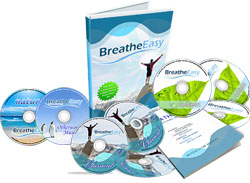Can red meat be part of a healthy diet for lower blood pressure?

Many people think they should avoid red meat for lower blood pressure. But the health myths of red meat have been thoroughly debunked.
You wouldn’t think so. Not if you listen to the usual bunch of self-appointed natural health promoters and “nutritionists” that flood the media with health myths and food hysteria…
Even the respected DASH plan (Dietary Approach to Stop Hypertension), promoted as a scientifically-sound and medically approved eating strategy to reduce blood pressure, falls prey to the anti-meat zealots. DASH guidelines contain stringent limits for meat consumption and recommend reduced consumption of red meats in favor of lean meats, fish and poultry.
But the DASH guidelines are actually rather modest. According to many health ”experts”, red meat is the devil’s spawn, responsible for high blood pressure, high cholesterol, heart disease, cancer, bad skin and even bad body odors (not to mention those of body waste, a particular specialty of health guru, Gillian Keith).
Ms Keith goes so far as to boast that she would divorce her husband if he were to eat red meat. (NOTE: Use of the title “Ms” here instead of “Dr” is not an oversight; Ms Keith obtained her “doctorate” through correspondence courses with a non-accredited college. She has hence been banned from using the title “doctor”.)
It should come as no surprise that the “science” behind the demonization of red meat is as flimsy as Gillian Keith’s doctorate. Let’s look at some of these myths:
MYTH 1: Red meat contains unhealthy levels of saturated fat and “bad” cholesterol that clog arteries. leading to high blood pressure and heart disease…

Saturated fat in today's red meat has been reduced substantially. Moderate amounts of saturated fat in the diet provide important amino acids and other nutrients and red meat provides these.
The facts: Modern breeding and farming methods have substantially cut fat levels in red meat. Much of it now contains less fat than can be found in chicken. In fact, even cheese can contain up to ten times the amount of fat than red meat on a pound per pound basis.
Following the DASH diet has proved to reduce blood pressure and this success is often cited as proof that reducing or even eliminating red meat in your diet is healthy. But the DASH diet is a package deal and some of its details may easily be misguided. Since we’ve already seen that chicken (favored by the DASH diet) may be fattier than red meat it stands to reason that DASH dieters may achieve even lower blood pressure by replacing some of the chicken in their diets with red meat.
What’s more, red meat (more so than chicken) is an excellent source of protein, amino acids, vitamins and minerals including iron, potassium, magnesium and selenium. Fatty acids found in red meat (often found only in red meat) – far from being harmful - are actually very beneficial for the heart.
And as a final word, it may even be that medical science has taken a very wrong turn in trying to establish the causes and mechanisms behind heart disease. It’s early days yet but a new theory placing the origins of heart disease in blood acidity, not fat and cholesterol consumption, is rapidly gaining credibility…
After all, isn’t it odd that after three decades of reduced meat consumption combined with a low-fat food obsession obesity has mushroomed out of control and hypertension and heart disease are still raging?
MYTH 2: Eating red meat increases the risk of getting certain cancers…
The truth: Exhaustive studies show there is NO LINK between the consumption of reasonable amounts of red meat and getting any type of cancer. Even attempts to prove a link between cancer and consumption of extreme amounts of read meat are far from conclusive.
The fact is that our consumption of red meat has already fallen substantially over the last 30 years. Currently in the United Kingdom men consume an average of 96 grams of red meat per day while women consume 57 grams a day on average. This is well below the limit of 140 grams per day recommended by many medical experts.
As far as cancer risks go, the way you cook your meat has a greater impact than the type of meat you eat with overdone or charred meat posing the greatest risk.
MYTH 3: Rearing of cattle for red meat and dairy is a major contributor to global warming…
(This topic may not seem directly health-related but in the big picture it sure is!)
The facts: Whatever your stance on global warming (and eating meat), you can rest assured that grazing cows are NOT contributing to the destruction of our planet. Not only has the amount of methane gas they emit been wildly exaggerated, but there is now evidence that grazing cows actually help the environment by reducing levels of the greenhouse gas nitrous oxide.

The amount of methane gas released into the atmosphere by cows, often quoted as 18% of total greenhouse gases, is wildly overstated. The true figure is around 2%. In exchange, they reduce levels of harmful nitrous oxide... a very fair trade!
If cattle destroy the climate how did the earth ever survive the many thousands of years when million-strong herds of bison and buffalo roamed over the vast plains of North America and Asia?
Of course, the same caveats apply to this issue as to the more direct aspects of health; there is no justification for going to the steak house every night for a 16 oz T-bone (if anybody still does this!). The current recommended limit of 140 grams of red meat per day (about 4.5 oz) is more than enough. These sensible amounts of red meat pose no risk to either your health or that of the planet’s.
You may reject red meat because you genuinely dislike eating it and vegetarians may reject it on ethical grounds. But after looking at all the evidence there is not a single valid reason to shun moderate amounts of red meat on account of health.
In fact, you can enjoy the occassional burger or steak (but don’t overcook it!) as part of a healthy diet free of guilt over raising your blood pressure and endangering your heart and environment. Chances are it may even help to reduce your blood pressure and protect your heart!

















 A unique method of blood pressure control: The BreatheEasy Sytem
A unique method of blood pressure control: The BreatheEasy Sytem